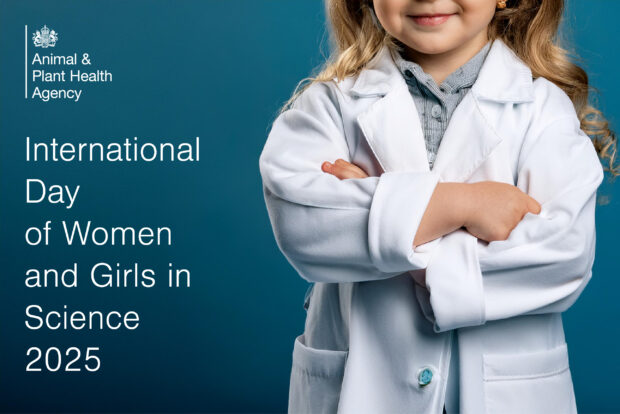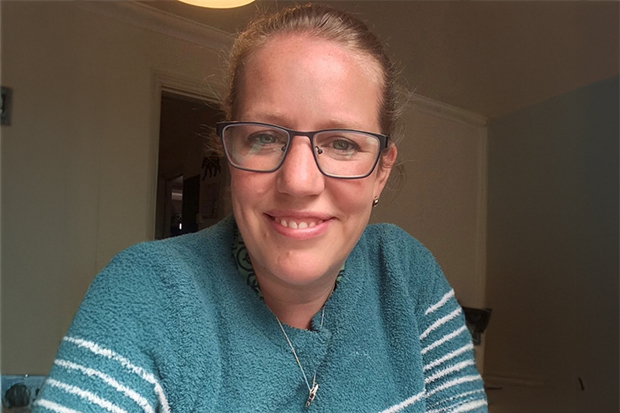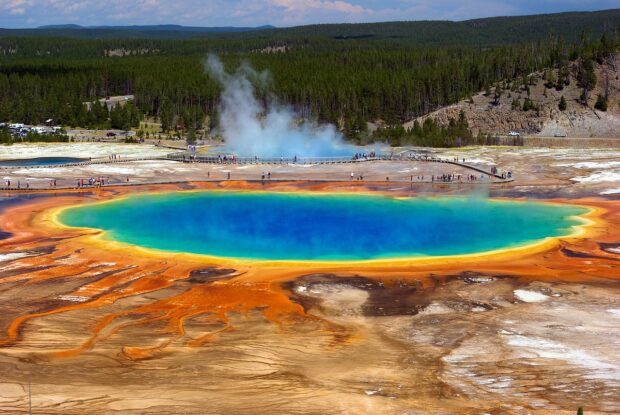
Today marks the 10th International Day of Women and Girls in Science, demonstrating the determination of the international community to put an end to gender inequality in science, employment and education.
This year’s theme is, “Closing the Gender Gap in Science: Accelerating Action”. At the Animal and Plant Health Agency (APHA), we are proud to uphold an equal gender balance across our science roles and in leadership positions too.
Dr Jess Parry, our Epidemiology Workgroup Leader, reflects on her path from a curious young girl, passionate about biology to her current role as a scientist and leader at APHA.
Dr Jess Parry

"Growing up in a household where my mother was a devoted science and biology teacher and my father, an avid birdwatcher and nature observer, I was introduced to science in a way that was both accessible and inspiring from an early age.
Like any young person facing big decisions about the future, I explored different career paths and initially chose A-levels, with a view to studying French and law. However, by the second year of my A levels, I realised I really wanted to pursue biology.
To get into my first-choice university, I needed to take on an AS level in chemistry alongside my biology A level. Thanks to a supportive teacher who dedicated extra time to help me catch up, along with my own determination, I achieved the grades I needed and was accepted into the University of Bath for an honours degree in Applied Biology. I loved the diversity of my course and the focus on the application of biology to real-world problems.
While at university, in discovering the delights of the internet, I stumbled upon an incredible opportunity to work at Yellowstone National Park over the summer. For any microbe-lover, visiting Yellowstone is akin to a pilgrimage due to the incredible and dazzlingly colourful bacterial mats and the presence of heat-loving bacteria, such as Thermus aquaticus, which provide us with thermostable enzymes used in diagnostic tools. I funded my trip by waitressing in a lodge by Old Faithful Geyser, with the park's wonders just outside the door.

As part of my degree, I completed a one-year placement at a diagnostics company in Kent, where I gained valuable hands-on experience in developing and troubleshooting diagnostic tests for Human T-lymphotropic virus, human immunodeficiency virus (HIV), syphilis, and other infectious diseases.
After completing my degree, I was offered the chance to pursue a PhD. I had not considered this path, but my placement experiences and final-year dissertation project gave me the confidence and deepened curiosity to want to pursue it. My PhD focused on the population structure and molecular evolution of Staphylococcus aureus and antimicrobial resistance. I remember fondly the encouragement and support of my supervisor ahead of my first presentation at an international conference and the submission of my first scientific paper. These first milestones can be nerve-wracking, and the wisdom and experience of others is invaluable.
With my PhD completed, I secured a job at a diagnostics company in Hampshire, where I developed bacterial culture media that differentiated bacteria by colour—science is full of creativity and colour! Eventually, I found myself taking up an exciting role at the Veterinary Laboratories Agency (VLA), now part of the Animal and Plant Health Agency (APHA). That position allowed me to combine my love of infectious diseases and experience in population biology, marking the start of my specialization in epidemiology—the study of disease in populations.
That was 18 years ago. I gradually built my expertise under the guidance of fantastic epidemiologists at APHA and progressed to become a team leader. It is a role I love because I get to manage, coach, grow, and mentor an incredible team.
Many science careers present opportunities to collaborate with scientists internationally. I am proud to provide expert support to the Observatory at the World Organisation for Animal Health (WOAH) and be part of APHA's joint designation as a WOAH Collaborating Centre for Risk Analysis and Modelling with the Royal Veterinary College (RVC).
There have been many remarkable achievements by women in science, with increasing visibility and I am thrilled that my daughters have books outlining some of these incredible feats. I admire all that these inspiring women have achieved. Many have reached dazzling heights and are truly worthy of recognition.
However, sustained inspiration comes from the people, both women and men, I work with directly in science. They consistently inspire and drive me to do my best work.
There is the colleague who sticks with a science paper through endless obstacles and long submission processes until it finally gets published. The leader who acts as a human shield, protecting colleagues as much as they can, from a deluge of work requests and pressure. The one who sticks with the hard challenge of landing on the best approach and data to address complex study design problems. The one who, despite their own deadline, supports a colleague who needs help and support with their studies. The experienced scientist who steps aside from a conference place to enable an early researcher to attend. The ones who bring so much enthusiasm and warmth that they lift the energy in the whole room. Those who pick up the critical work when others cannot be around. The ones who are brimming with new ideas and cannot help but share them. I am so proud and grateful to have so many truly brilliant people around me in science.
Big achievements in science can be truly inspiring, and the work can be incredibly rewarding. Discovering new things and making an impact is amazing, but it is important to remember that these things do not happen overnight. The science community and the culture around you make a huge difference."
Why girls should pursue STEM careers
Find out why we think girls should be encouraged in STEM fields by listening to a few of our successful female staff…

2 comments
Comment by Dr. Rebeca Garcia Pinillos posted on
On this 10th International Day of Women and Girls in Science, I support the ongoing efforts to close the gender gap in science. As a specialist vet in animal welfare science, ethics, and law, I’m inspired by the achievements of colleagues like Dr. Jess Parry, whose journey highlights the value of mentorship, passion, and dedication. Thanks for sharing your story and those beautiful bright bacteria! 🙂
Achieving equality in science benefits everyone, fostering a more inclusive, diverse, and innovative field. I’m proud to be part of a community where all genders contribute to the advancement of knowledge, and together, we can continue breaking barriers and accelerating progress.
Comment by Amanda Gage posted on
Great to read this Jess, what a journey and to keep doing what you love, brilliant and inspirational.